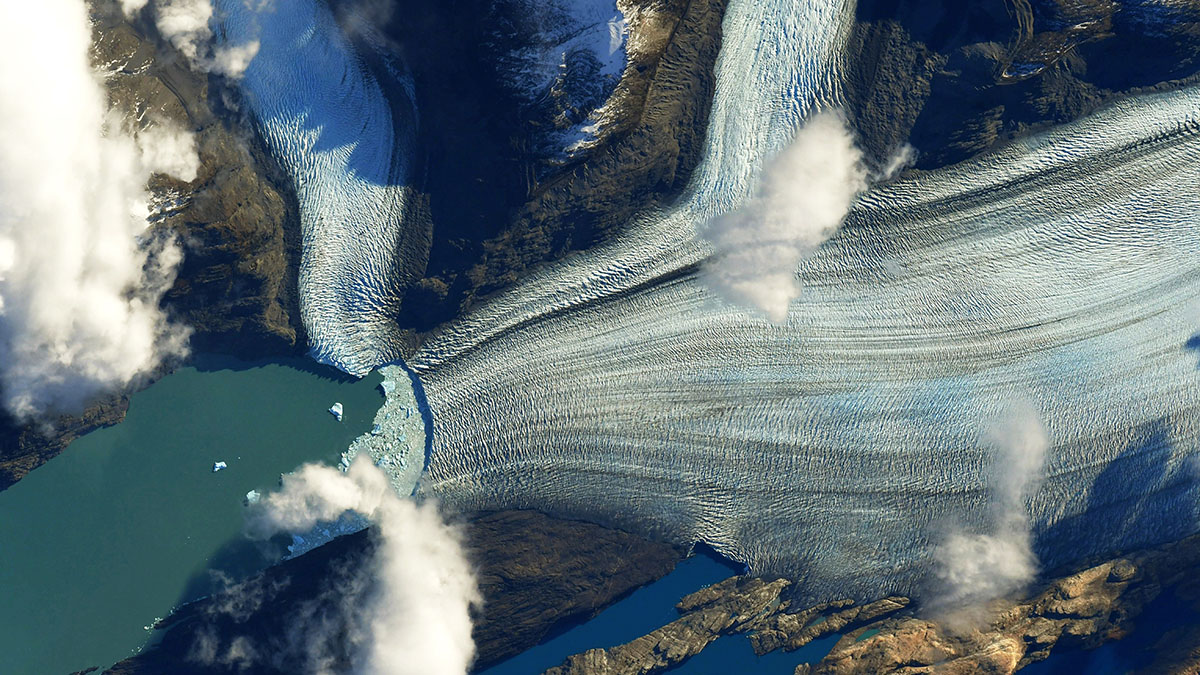HERE’S HOW TO DO IT.
Not more, but better: how to cover climate conferences?
International climate policy has become a complex and technical process that journalism must continue to watch closely. Here are some recommendations for doing it constructively.
By Tais Gadea Lara, in collaboration with Kristian Elster and Mahima Jain
If there is one climate moment in the year that takes global attention, it’s the United Nations Climate Change Conference, known as COP (Conference of the Parties). This is the annual meeting where governments debate, negotiate and decide how to continue action on climate change.
According to the Media and Climate Change Observatory’s monitoring, COP28 highlighted climate change coverage in 59 countries in seven regions.Media interest in the COPs is reflected in greater press attendance over the last decade: the number of people accredited as “media” went from 904 at COP20 in 2014 to 2,573 at COP28 in 2023. They were joined remotely by thousands of other journalists. At the same time the process has become more complex. The challenge for journalists has been to stay on top of the material and at the same time maintain attention – and keep their audiences interested.
From a constructive climate lens, here are recommendations that have been shared and implemented in trainings for journalists around the world and that have helped to better cover COPs.
Understand, comprehend, and prepare (both journalists and audiences)
The first requirement when covering a COP is to understand what it is, what it implies, and what happens there specifically. A map of the relevant and influential actors is useful. Preparation will be essential for journalists to translate this complex world to audiences and avoid the common mistake of considering that “a COP will solve all climate change.”
It’s key that journalists acquire not PhD-level training, but a general knowledge about the functioning and state of climate multilateralism. This can be achieved through United Nations courses that are offered virtually or through specific workshops that specialized professionals or initiatives such as Climate Tracker and Earth Journalism Network give prior to the event. Also, some organizations and governments provide previous press briefings that could be useful to have an updated background of the conference. Needless to say: start by reading the Paris Agreement.
Super technical or complex details such as meanings of acronyms (NDCs, LULUCF, SBSTA, just to name a few), differences in responsibility between verbs used in documents (may, should, shall, must), definitions of the concepts in dispute (phase-out vs. phase-down fossil fuels), country positions, are advisable to keep in a pre-produced document to refer to when needed during coverage.
Explainers such as What is a COP or special editions on What specific topics are discussed at the next COP help and guide audiences with better understanding. In some media, these stories were the ones that captured readers’ attention the most, especially if COP was explained with Taylor Swift’s songs. Plus: explainers can be updated and reused the following years.
Focus on negotiations, be careful with greenwashing
Many things happen simultaneously at a COP: political speeches, side events inside and outside the venue, actions of activists, difficulties in the logistics before and during, and… the most important thing, the negotiations.
A lot of media attention goes to commitment statements made at COPs—like the one to end deforestation by 2030 made at COP26— and they are just that: statements not actions. They don’t have a process of monitoring, implementation and control. The one that does have it is the Paris Agreement and that is what the negotiations are about. That is what the coverage must focus on. In other words: beyond the color profile of an oil CEO presiding over a COP, focus on how this can affect the negotiations: accelerating the energy transition or blocking the progress of more ambitious climate action?
Some useful resources to follow the negotiations:
– Earth Negotiations Bulletin, by the International Institute for Sustainable Development (IISD)
– ECO Bulletin, by Climate Action Network (CAN) International
– Global Climate Diplomacy Briefing, newsletter by Global Strategic Communications Council (GSCC) Network. Subscription
Focus on one or two topics
At the most recent COP28 there were more than 100 items of agenda under discussion. These are impossible to follow precisely for a team of journalists, much more so for a freelance journalist. Focus coverage on one or two topics in particular to be able to follow up in detail, understand their complexities, and analyze the results of what was decided. The choice of these topics will depend on how specialized the media and the audience are, and may also be based on:
a) the topics of interest to the audience’s region: financing and adaptation for the Global South, for example.
b) the main discussion topics of the next COP: how to translate financing mobilization commitments into reality, for example.
c) a mix: the main topics of the next edition that are of particular concern to the region of the audiences, for example, how the Global South is preparing—or not—to receive money for climate action once it appears on the table.
Cover the position of your country or region, but be careful to remain analitical and objective
Due to the interests of their audiences and newsrooms, journalists often focus their coverage on the position that their country or region has in the negotiations. But reporters should not advertise or defend it. Country delegations—some more than others—are very strategic in providing information to certain media so that their interests are reflected and amplified.
Journalists need to talk to the different parties in a dispute, that is: with negotiators from different countries. It is also important to listen to what civil society representatives have observed and heard in the negotiation meetings. Collaborating with journalists who are at the conference and those who are not can increase accuracy.
Bring that remote-technical world to the proximity of the audiences’ daily lives
Even though sometimes it seems like it, the COP doesn’t exist like a bubble disconnected from the world. Journalists can show the connections between what is decided inside and the reality outside. Journalists can do this in different ways:
– Explaining the position that the country’s government has at the conference: does it seek to make progress in reducing emissions, does it demand financing for its climate policies, does it block any progress? What local actions is it really taking?
– Explaining how or why a negotiation issue is relevant to the country or community of the audience. Example: how the floods in Pakistan played a role in the establishment of a loss and damage fund at COP27.
– Linking an event that captures all the attention in the audience’s country with its impact or development at the conference. Example: how the victory of Donald Trump in the United States’ election during COP22 affected international climate policy. Linking an event that captures all the attention in the audience’s country with its impact or development at the conference. Example: how the victory of Donald Trump in the United States’ election during COP22 affected international climate policy.
– Analyzing the opportunities and challenges that the decisions made have for the region, country, or community of the audience. Example: how prepared or not Latin America is to leave fossil fuels, main topic of discussion at COP28.
Analyze the results beyond “success”, “failure” and press releases
There is great temptation to classify the outcome of a COP as “success” or “failure”. The important thing in each final analysis is to include a diversity of voices (governments negotiators, scientists, civil society observers, activists) and of countries’ positions. It is worth remembering the popular saying among the COP corridors: a good result is when all Parties leave a little dissatisfied.
It is recommended that the final stories include a mention of what comes next. How do a COP’s results connect to the main themes of the next edition of the conference? How, for example, will the governments of Azerbaijan and Brazil work together to continue the work between COP29 and COP30, conferences that they will chair respectively?
You can innovate in the coverage of COP’s outcomes by doing a series of publications and not condense the entire analysis into a single story, or by complementing the detailed publication with an online conversation with the journalists who covered the conference. The media outlet Carbon Brief has done a remarkable job in its final coverage of COP28.
Cover climate policy all year
A COP lasts two weeks, but international climate policy never ends. There are some meetings throughout the year to advance technical aspects for political decisions and a lot of COP’s results to track. For example: is the money that was announced already on the table?
Also, from the impacts of an extreme climate event, the launch of a national or municipal plan, the mobilizations of civil society, much of what happened during the year can be linked to “what was decided at the last COP” or “what will or need to be discussed at the next one”. Communicating beyond the two weeks of the global event will help keep your audience informed and interested.

Can journalists cover a COP even if they are not in the venue?
Definitely yes. Journalists at the venue have many advantages, for example being in the hallways chatting and following the status of negotiations. But they also have a packed schedule that can be complemented by the work of colleagues working remotely. They can transcribe interviews, edit images or videos, and follow some of the online press conferences. They can also research in-depth stories about topics discussed at the COP.
Advice on personal security
A journalist may not imagine having to provide personal and professional security measures for an international United Nations event, but the situations of harassment and intimidation suffered by participants (including journalists and especially directed towards women) at the COP27 in Sharm El- Sheikh, Egypt raised an alert.
If you are a journalist and will attend a COP, it’s important that you seek advice on personal, digital, and professional protection and care measures. This may be with the delegation of the country in which you work, and/or through organizations such as Amnesty International, which usually guides journalists based on the cultural norms and policies of the government of the host country.
Whether you are part of the staff or a freelance journalist, talk to the editors, producers, managers of your organization beforehand about the actions to take in case of emergency. During the conference, be sure to contact the communications team of the United Nations Framework Convention on Climate Change (UNFCCC), which is separate from that of the government of the host country.
Menu



